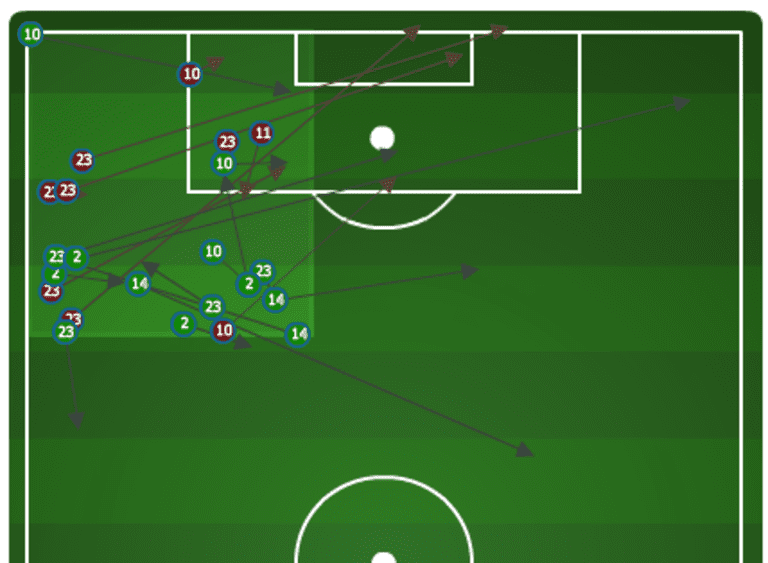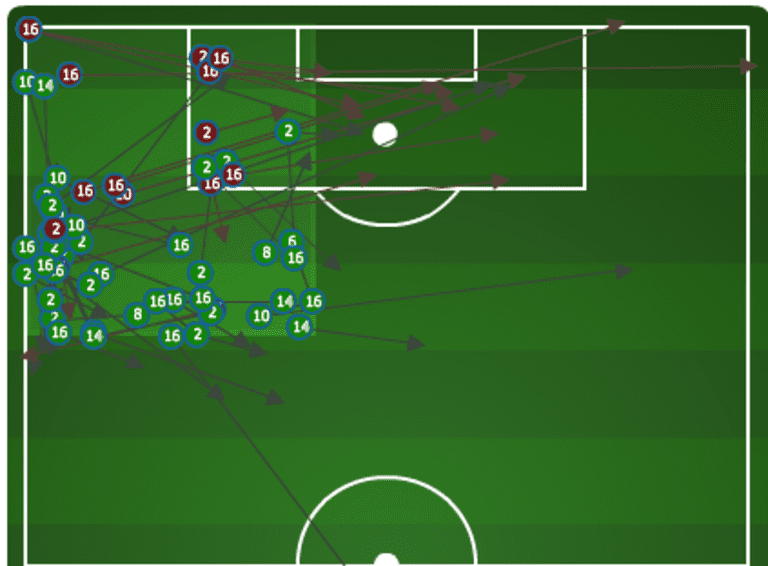For the third straight game, the US were much better in the second half than they were in first. For the third straight game, they scored a bunch of goals. For the third straight game, there were some defensive lapses that should be classified as “worrying.”
But let’s not worry too much. Few national teams anywhere are capable of scoring 16 goals across three games even against the likes of Guatemala, Belize and Cuba. If you don’t believe me, just ask fans of El Tri at the moment.
Here are three thoughts about the 4-1 romp over the Cubans:
1. Adjustments are the name of the game
For the first 18 months as US coach, Jugen Klinsmann was too slow to make adjustments, and too defensive with the ones he made. It looks like he’s learned.
The big adjustment in this one was figuring out what to do with his wide midfielders. Both Brek Shea on the left and Joe Corona on the right were strictly linear, meaning they got the ball already wide (chalk on the boots in Shea’s case) and were left to either hit a first-time cross or try to beat their man in isolation. It was ugly.
It also minimized the role of Landon Donovan, who’s at his best ghosting inside and out, outside and in. He knows how to see space and make use of it, and the lineup and tactics for the first 40 minutes meant there was precious little space, and even less time during the few touches he had on the ball.
Here's the map of US passes down the left in the first half:

With five minutes to go in the first half, Klinsmann had Shea pinch inside, which gave Donovan room to flare to the touchline. It was even more pronounced in the second half when Jose Torres replaced Shea, since Torres only wants to get inside and act as a hub rather than an out and out attacker.
Here's the map of second half passes down the left channel:

Obviously it worked. Donovan was dynamic, usually finding room wide on the left and combining with an overlapping Edgar Castillo. As Eric Wynalda pointed out on the broadcast, it actually looked quite like a 3-5-2, since Castillo was essentially a wingback instead of a fullback at that point.
It was good recognition by Klinsmann on the sub, and the typical elite reading of space and pace from Donovan. Good coaching.
2. Brek Shea is no-system player
I’d still make the argument that Kyle Beckerman – who was excellent in the second half – is more a system player than not. His methodical approach works for the well-drilled RSL team, but he has a habit of slowing the game down with the US, a cardinal sin for a team that’s always at its best when moving themselves and the ball quickly.
Now: What system is Brek Shea at his best in? He was underwhelming in the possession-based US U-23s last year. He doesn’t get off the bench for Stoke City, one of the most direct top-flight teams in the world. And Klinsmann’s US – effectively the midway point of those two approaches – obviously hasn’t suited him.
Shea had one of the worst halves of soccer anyone has had in a US shirt in recent memory, and the team improved immensely once he was less involved, then immensely again when he was subbed. And I don’t really have any ideas as to how to fix it other than “it’s really, really time to try him at left back, because at least he’s dangerous when he’s getting the ball on the run.”
3. Wondow
Never get rid of that W. Never ever.














